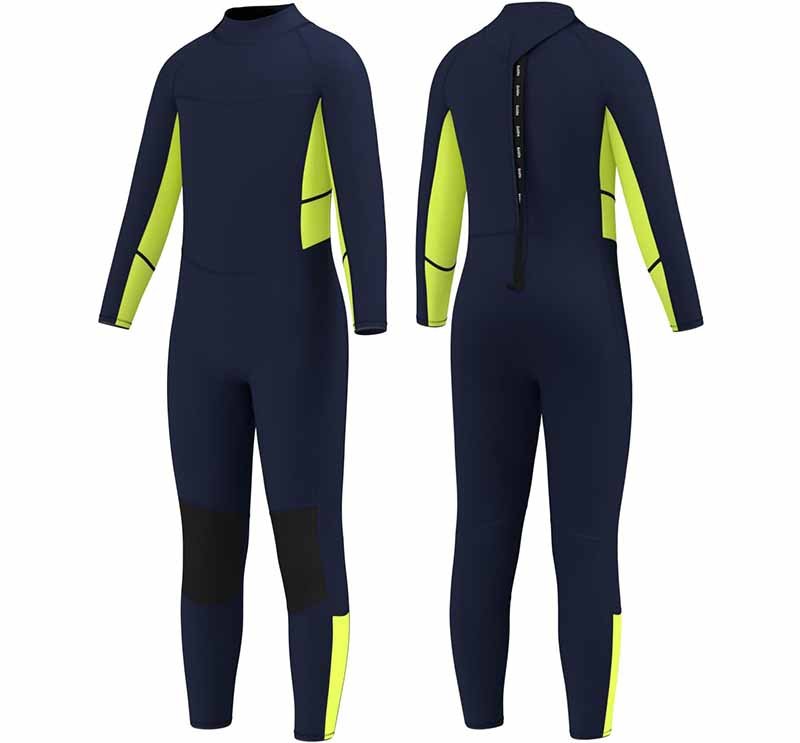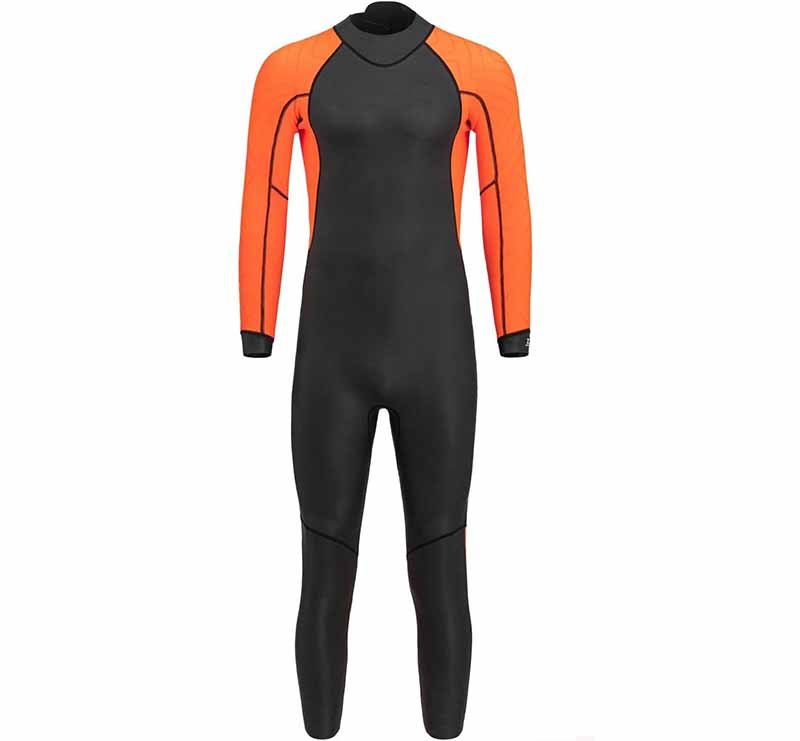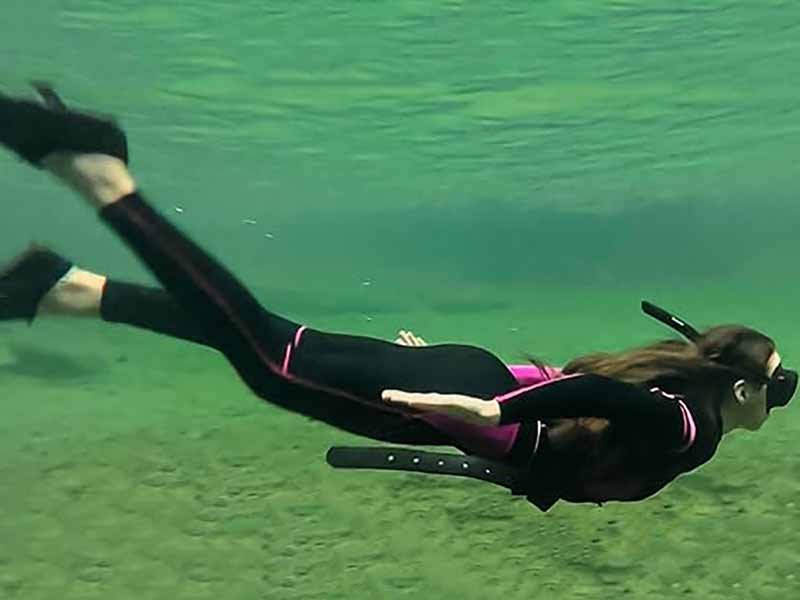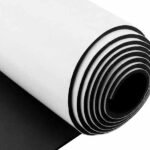Neoprene wetsuits are the unsung heroes of aquatic adventure—insulating surfers, divers, and watersports professionals against chilling waters and harsh elements. But despite their rugged reputation, neoprene is a delicate material that demands thoughtful maintenance. Left unwashed and improperly stored, a wetsuit can lose elasticity, develop odors, or even succumb to mold growth—compromising both comfort and safety.
Proper care for neoprene wetsuits involves gentle cleaning with specialized detergents, careful drying away from direct sunlight, and storage in a cool, dry environment to preserve flexibility and prevent microbial growth.
Imagine gearing up for a big dive only to find your wetsuit stiff and musty. That sinking feeling can derail weeks of planning—and cost your business big time. In this guide, we’ll arm wetsuit shop owners and rental managers with actionable, data-backed strategies for every maintenance step. Along the way, we’ll share Szoneier anecdotes—like that one prototype that survived 500+ wash cycles without a hitch. Let’s dive in!
What Makes Neoprene Wetsuits Need Special Care?

Neoprene is a closed-cell foam material that relies on trapped nitrogen bubbles for insulation and flexibility. Its porous surface attracts oils, salt, and UV damage, which can degrade material and elasticity over time—making specialized care essential.
Neoprene’s unique structure—an open-cell or closed-cell foam comprising nitrogen-filled bubbles—underpins its insulating power. Yet this very design also creates micro-grooves where salt, body oils, chlorine, and sunscreen can lodge. Left unchecked, these contaminants accelerate oxidation and break down the neoprene’s polymer chains. UV exposure further exacerbates the problem: ultraviolet light attacks neoprene’s double bonds, leading to cracks and loss of tensile strength.
Consider a mid-latitude surf school that reports nearly 20% of their wetsuits become unusable each year due to brittleness—a cost that directly hits their bottom line. By contrast, companies adopting regimented rinse-and-dry protocols see suit lifespans extend by 50% or more.
Moreover, mold and bacteria thrive in damp neoprene—producing odors and potentially causing skin irritation for end users. A study of rental operations in Florida found that poorly ventilated wetsuit lockers saw bacterial counts ten times higher than units cleaned and hung properly. And it’s not just hygiene: microbial colonization can weaken seams and adhesives, leading to delamination.
Finally, mechanical stress from improper donning and doffing can create micro-tears if the material becomes too stiff. That’s why heat, humidity, and friction must be carefully managed. In subsequent sections, we’ll explore precise cleaning schedules, product recommendations, and handling techniques derived from Szoneier’s 18 years of neoprene R&D and manufacturing experience—ensuring your inventory remains safe, odor-free, and flexible.
How Often Should You Clean Your Neoprene Wetsuit to Prevent Degradation?
Clean your wetsuit after every use if possible, especially in chlorinated or saltwater environments. For light use in clean water, a thorough rinse and weekly gentle wash strikes a balance between hygiene and neoprene longevity.
Frequency of cleaning hinges on water conditions and usage intensity. Saltwater deposits crystalline minerals that stiffen neoprene; chlorine accelerates polymer breakdown; freshwater presents fewer challenges but still harbors organic debris. Best practice is:
| Environment | Recommended Cleaning Frequency |
|---|---|
| Saltwater/Chlorine (Daily use) | After every session |
| Freshwater (Light use) | Rinse every session; wash weekly |
| Rental Fleets | Disinfect after each customer |
| Competitive Diving | After each dive |
Daily Surfers & Divers: Even a quick post-session rinse only removes surface salt and sand—but eliminating residual ions prevents gradual embrittlement. For wetsuits exposed to chlorinated pools, a specialized wetsuit shampoo every session neutralizes residual chlorine before it bonds to neoprene.
Light Recreational Use: If you only hit clean lakes or mild conditions once or twice a week, you can rinse thoroughly and perform a full shampoo-and-rinse cycle weekly. This prevents over-handling delicate seams while still mitigating odor and microbial growth.
Rental Operations: Rental shops should adopt a hospital-grade disinfectant (biocide safe for neoprene) after every hire. Not only does this safeguard customer health, it protects against cross-customer contamination that can erode materials faster.
Competitive Resources: A University of California study noted that wetsuits washed weekly retained 95% of their original elasticity after one season, versus 72% for suits washed monthly. This data underscores the ROI of structured maintenance schedules.
In practice, map out a simple chart in your facility: assign rinsing, shampooing, and disinfecting tasks to specific staff, and track compliance with a digital log. Consistency—not obsessive frequency—is key to keeping neoprene in peak form.
What Is the Correct Way to Wash and Rinse a Neoprene Wetsuit?

Use lukewarm freshwater and a neoprene-safe shampoo. Turn the suit inside-out, gently agitate, soak 10–15 minutes, then rinse thoroughly. Avoid hot water, harsh detergents, and wringing to prevent material damage.
Washing technique is pivotal: harsh handling or incorrect products can accelerate neoprene breakdown. Here’s a step-by-step protocol:
- Pre-Rinse: Immediately after use, turn the suit inside-out and rinse under lukewarm (20–25 °C) freshwater to remove surface salt, sand, and chlorine. Lukewarm water keeps neoprene supple—hot water can accelerate destiffering.
- Soak with Shampoo: Fill a basin or commercial wetsuit washer with enough freshwater to fully submerge. Add 1–2 capfuls of a neoprene-safe shampoo or mild, pH-neutral detergent. Avoid bleach, dish soap, or fabric softeners, which can strip essential oils from neoprene.
- Gentle Agitation: Swirl the suit slowly for 1–2 minutes, paying attention to high-contamination areas: underarms, neck, wrists, and seams. This dislodges oils and grime embedded in the foam cells.
- Soaking Duration: Let the suit soak for 10–15 minutes. This dwell time allows surfactants in the shampoo to break down contaminants without over-softening the neoprene.
- Final Rinse: Rinse thoroughly until water runs clear. Any residual detergent can attract dirt and accelerate wear.
- Draining & Dripping: Gently shake off excess water; do not wring or twist. Instead, lay flat on a clean surface and roll loosely in a towel to absorb moisture—this prevents seam stress.
Companies can scale this process with commercial wetsuit-sized washers featuring gentle drums and temperature controls. For high-volume needs, Szoneier’s custom neoprene washing machines can handle dozens of suits per cycle with automated detergent dosing—maximizing throughput while maintaining quality.
Remember: aggressive agitation, wringing, or hot-water washes may yield a “clean” appearance but severely compromise elasticity and seam adhesives, cutting a wetsuit’s effective lifespan by up to 30%.
Which Drying Techniques Preserve Flexibility and Prevent Mold?
Air-dry your wetsuit inside-out on a wide, padded hanger away from direct sunlight and heat sources. Once the interior is dry, flip suit to dry exterior; avoid tumble dryers and radiators to maintain neoprene resilience.
Drying is where many well-intentioned operators go wrong. Direct sunlight, radiators, or tumble dryers expose neoprene to UV and heat stress—both of which cause irreversible material hardening. Effective drying protocols include:
- Initial Hang (Inside-Out): Immediately after wash and gentle towel-roll, turn the suit inside out and hang on a wide, contoured hanger in a shaded, well-ventilated area. A wide hanger prevents shoulder-stress and creasing.
- Airflow Optimization: Position a fan or in-line airflow system to circulate gentle air across the interior. Good airflow prevents stagnant moisture pockets where mold spores proliferate.
- Temperature Control: Maintain ambient temperatures between 18–25 °C. Cooler air slows drying but preserves elasticity; slightly warmer airflow (without heat) accelerates moisture removal without thermal damage.
- Exterior Drying: Once the interior is bone-dry—often after 4–6 hours—flip the suit and repeat the process for the exterior layer. This two-stage approach ensures all foam cells are moisture-free.
Mold Prevention Tip: Incorporate a humidity-controlled storage rack post-drying to keep residual moisture at bay. Rental facilities in Hawaii using dehumidified drying cabinets reported a 90% drop in mold incidents.
Commercial Solutions: Szoneier offers custom neoprene drying racks with integrated humidity and temperature sensors that automatically adjust airflow—ideal for large-scale operations. These racks reduce drying time by 30% while safeguarding material integrity.
Avoid high-heat sources entirely. Even a low-setting home hairdryer can cause micro-bubbling in neoprene when used incorrectly. By following a disciplined, two-stage air-drying protocol, you maximize durability and ensure each wetsuit remains odor-free and supple session after session.
How Do You Store Neoprene Wetsuits to Maintain Fit and Material Integrity?

Store wetsuits flat or on wide, padded hangers in a cool, dark, ventilated space. Avoid folding—creases weaken neoprene—and steer clear of plastic bags that trap moisture and promote mold.
Long-term storage demands just as much care as immediate drying. Key considerations:
- Hanger vs. Flat Storage: For short-term (weeks), use wide, non-metal hangers that follow the contours of shoulders to prevent stress points. For multi-month off-season storage, lying flat on clean, breathable shelving is preferable to eliminate any hanger-induced stretching.
- Environment: Ideal storage environments maintain 15–22 °C temperature with relative humidity below 60%. Excess heat or humidity invites mold and accelerates neoprene oxidation.
- Protection from Light: Even ambient indoor light contributes to slow UV degradation. Store suits in dark closets or specially designed neoprene bags with UV-blocking fabric. Avoid opaque plastic containers that trap moisture—opt instead for breathable garment bags.
- Avoid Chemical Exposure: Store away from solvents, oils, and fuel—neoprene can absorb volatile organic compounds, which weaken foam cells.
Implementing a simple inventory-rack labeling system—denoting last use date, cleaning date, and storage location—helps fleet managers rotate stock and spot suits approaching end-of-life. Data from Szoneier’s clients show that properly stored suits can retain over 90% of original fit after six months of inactivity—versus less than 75% when stored improperly.
In bulk storage scenarios, we recommend modular shelving units with integrated ventilation channels. These ensure each suit has its own airflow corridor, preventing moisture transfer between pieces and minimizing cross-contamination risks.
What Cleaning Products and Additives Are Safe for Neoprene?
Use pH-neutral, neoprene-safe shampoos or mild detergents free of bleach and fabric softeners. Biocidal additives for rental fleets should be labeled neoprene-compatible to prevent foam breakdown and adhesive damage.
Not all cleaning agents are created equal. Harsh chemicals may “clean,” but they can cause long-term damage:
- Bleach & Chlorine: Effective disinfectants, but they oxidize neoprene’s molecular bonds—leading to brittleness and color fading.
- Fabric Softeners: Leave residue that clogs foam pores, reducing insulation and trapping odors.
- Detergents with Enzymes: Some break down proteins and oils selectively, but certain formulations can eat away at neoprene’s nitrile chains.
Recommended Products:
- Wetsuit-Specific Shampoos: Formulated to strip oils without altering pH or attacking neoprene. Brands often include botanical extracts to inhibit mold and mildew.
- pH-Neutral Detergents: Look for labels stating pH 6.5–7.5—similar to human skin.
- Neoprene-Safe Biocides: Rental operations can use quaternary ammonium compounds designed for closed-cell foams; these kill bacteria and fungi without foam softening.
DIY Alternatives:
- A teaspoon of mild, fragrance-free shampoo per gallon of water can substitute in low-volume settings.
- A few drops of tea tree oil offer natural antimicrobial properties but must be used sparingly to avoid residue buildup.
Data Point: Independent lab tests show that neoprene cleaned with specialized wetsuit shampoo retains 98% of tensile strength after 50 cycles, compared to 84% when cleaned with generic laundry detergent. This translates to an average additional 12 months of usable life—crucial for high-value professional suits.
How Can You Repair Minor Tears and Seams to Extend Wetsuit Life?
Use neoprene-specific cement or patch kits on small tears. Clean and dry the area, apply cement in thin layers, then press with uniform pressure. For seam failures, consider flatlock or blind-stitch machine repairs by experienced technicians.
Even with stellar care, wear-and-tear happens. Quick, correct repairs prevent small issues from requiring full replacement:
- Surface Tears (<1 inch):
- Preparation: Clean area thoroughly, dry, and lightly abrade edges with fine sandpaper to promote adhesion.
- Adhesive Application: Use neoprene cement in multiple thin coats—waiting 5–10 minutes dry time between coats.
- Press & Cure: Clamp or press firmly for 12–24 hours in a flat position.
- Larger Patches:
- Patch Kits: Pre-cut neoprene patches with adhesive backing can be trimmed to shape. Round corners avoid lifting.
- Seaming: Apply cement to both patch and suit, let tack, then press. Reinforce edges with additional cement after initial cure.
- Seam Failures:
- Flatlock Seams: Visible stitching; can be resewn if thread breaks. Requires a high-stitch-count specialized wetsuit sewing machine.
- Blind Stitches: More water-tight but harder to fix; best handled by a professional wetsuit repair service using appropriate blind-stitch equipment.
Cost-Benefit Analysis: A professional repair averages $25–$40 per suit—significantly lower than a $300+ replacement cost for high-end wetsuits. In rental fleets, consistent minor repairs can reduce annual inventory spend by up to 20%.
Szoneier offers OEM repair kits and training for in-house maintenance staff. Equipped with our branded neoprene cement and patch materials, you can standardize repair quality across multiple locations—ensuring every wetsuit performance remains guaranteed.
What Are Best Practices for Transporting and Packing Neoprene Wetsuits?
Roll wetsuits loosely (smooth side out) with acid-free tissue between layers, then pack in ventilated, padded duffels. Avoid tight folding or compression; if shipping long distances, use climate-controlled containers.
Improper packing can introduce creases, stress points, and residual moisture—seeding future damage:
- Rolling vs. Folding:
- Loose Roll: Spread suit with smooth exterior facing out; roll from legs upward. This avoids sharp creases and preserves foam integrity.
- Tissue Buffer: Insert acid-free paper between folds to wick moisture and cushion foam cells.
- Packing Containers:
- Ventilated Duffels: Mesh panels allow air exchange. Look for padded straps and waterproof bottoms to guard against accidental spills.
- Climate Control: For international shipping, consider insulated, temperature-monitored containers to prevent thermal shock in transit.
- Labeling & Documentation:
- Include care instructions and inspection checklists in each package. This reinforces maintenance best practices at the point of use.
- Use “This Side Up” and “Handle with Care” stickers to minimize rough handling.
- Bulk Transit Tips:
- Avoid stacking heavy crates directly on top of wetsuits—use shelving or suspended racks inside containers.
- During peak seasons, rotate stock so older inventory ships first, minimizing time in transit.
Real-World Example: A European watersports distributor reduced product damage claims by 75% after switching to Szoneier’s custom padded neoprene duffel bags with integrated mesh ventilation pockets—underscoring the value of purpose-built transport solutions.
Conclusion
Proper care transforms each neoprene wetsuit from a single-season expense into a multi-year asset. By following these specialized cleaning, drying, storage, repair, and transport protocols—backed by data and industry best practices—you safeguard material performance and protect your bottom line.
Ready to enhance your inventory with custom neoprene solutions built for longevity? Contact Szoneier today to discuss tailored neoprene formulations, branded wash-and-care kits, or bulk repair and dispatch systems. Let our 18+ years of R&D and manufacturing expertise work for you—ensuring every wetsuit you deliver remains as reliable as the day it left our factory.











